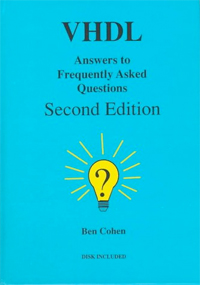 I put a blog entry up on the Oasys blog about their new release, which is the first to support VHDL. But a couple of people told me it was a nice recounting of history so I decided to put a more generic version over here.
I put a blog entry up on the Oasys blog about their new release, which is the first to support VHDL. But a couple of people told me it was a nice recounting of history so I decided to put a more generic version over here.
VHDL is, of course, one of the two main hardware description languages dating back to the 1980s. The history of Verilog and VHDL is quite interesting. Verilog was originally created by Gateway Design Automation. Gateway was subsequently acquired by Cadence for what seemed like a very high valuation at the time, although of course it has probably been one of the most successful acquisitions Cadence did when you think of the sales of Verilog that they have made over the intervening years. VHDL, which is actually one of those nested acronyms since it stood for VHSIC Hardware Description Language, with VHSIC further parsed down into Very High Speed Integrated Circuit. The VHSIC program was run by the US DoD and VHDL looked for a time that it might become the dominant standard, since Verilog was a proprietary language owned by Cadence.
But Cadence opened Verilog up and let other people participate in driving the language standard. As Gordon Bell once said, the only justification for VHDL was to force Cadence to put Verilog into the public domain. But having two languages has been a major cost to the EDA industry for very little gain. VHDL was a very powerful language but in many ways was less practical than Verilog. For instance, you could define your own values for any signal. But that meant that gates from one library wouldn’t necessarily interact properly with gates from another library (sounds like some of the problems with TLM models in SystemC that are finally being resolved). So that required a new standard, VITAL, so that gate-level signals were standardized. The richness of VHDL abstractions meant that it was and is used for some of the most complex communication chips. Model Technology (now part of Mentor) had probably the best VHDL simulator that they sold cheaply, and that helped to make VHDL more standard in the FPGA market than Verilog. Despite the fact that a Verilog simulator is easier to write than a VHDL simulator, it sold for a higher price for years. This has led to an odd phenomenon where some of the most advanced chips are done in VHDL, and many of the simpler ones.
Anyway, the dual language environment (and, of course, SystemVerilog has arrived to make a third) continues to exist. Almost all tools have, over the years, bitten the bullet and provided dual language support for both VHDL and Verilog. Often the front end for VHDL, which is a complex language to parse, comes from Verific (as does the VHDL front-end for Oasys’s RealTime Designer).
